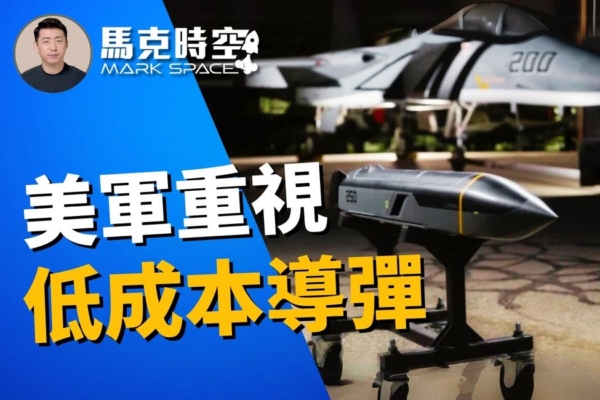The ongoing 31-month Russo-Ukrainian war has led to an astonishing consumption of weapons and ammunition, with the Western weapons production capacity increasing relatively slowly. This severely limits the level of aid to Ukraine, and how to mass-produce precision-guided weapons quickly may become a key factor in determining victory or defeat.
Facing the escalating military threat from the Chinese Communist Party, the US military is also considering countermeasures. On one hand, they must continue to maintain their advantage in military technology, and on the other hand, they must develop low-cost precision weapons that can be quickly produced in large quantities to maintain military superiority over China.
In June of this year, the US Air Force and the Defense Innovation Unit under the US Department of Defense selected four companies to participate in the development of the “Expeditionary Test Vehicle” (ETV) program. The aim of this project is to develop a low-cost, mass-deployable medium to long-range air-launched cruise missile.
Currently, the US military is equipped with the JASSM-ER extended-range Joint Air-to-Surface Standoff Missile, the LRASM long-range anti-ship missile with a focus on anti-ship attacks, and the JSM Joint Strike Missile, which will be deployed with both land strike and anti-ship capabilities. While these three air-launched cruise missiles have excellent performance, their manufacturing and usage costs are high, with procurement prices ranging from $1 million to $4 million. The US military hopes to achieve large-scale procurement and equipment of cruise missiles at low prices. Therefore, the “Expeditionary Test Vehicle” project sets the maximum range for the new ammunition at 926 kilometers, does not require supersonic flight, and has a procurement price lower than $150,000.
On September 12, Anduril Corporation unveiled the model of its new low-cost cruise missile series, Barracuda. The Barracuda missile series adopts a modular design, featuring low cost, easy operation, and scalable production. It will mainly be used for precise strikes on land and at sea, capable of direct attacks, long-distance attacks, and attacks within defended areas. The Barracuda series includes three models: Barracuda-100, -250, and -500. Each model is compatible with different effective payloads and operating mechanisms to support a wide range of combat missions.
The Barracuda is known as a “consumable autonomous aerial vehicle.” To save costs, the Barracuda series extensively utilizes existing commercial technologies and components for development and employs a modular design. It features foldable high aspect ratio wings on the back and four air rudders at the tail to increase strike distance. The power system uses a small turbofan engine capable of subsonic flight.
In addition to the Defense Innovation Unit’s “Expeditionary Test Vehicle” program, the US Air Force is also soliciting bids for an “Extended Range Attack Munition” (ERAM) designed specifically for Ukraine. In the bidding documents, the Air Force clearly states that this weapon is intended to provide Ukraine with a rapidly deployable precision strike munition, and they aim to develop it from existing unmanned aerial vehicle frameworks to reduce costs and development time.

